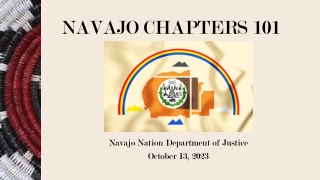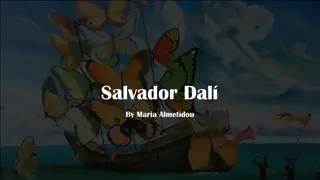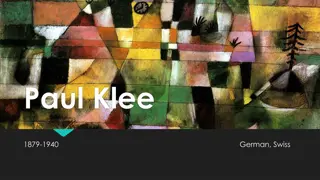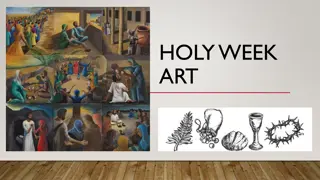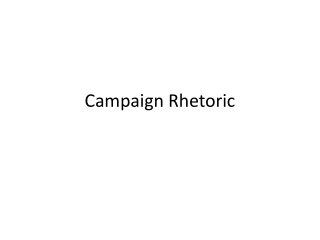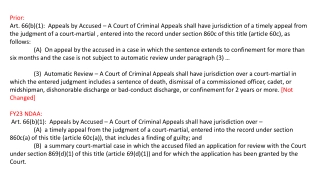Tlingit Tribal Art
The rich history and culture of the Tlingit people through their intricate tribal art. Learn about their clan structure, language, living conditions, and the importance of art in their lives.
Download Presentation
Please find below an Image/Link to download the presentation.
The content on the website is provided AS IS for your information and personal use only. It may not be sold, licensed, or shared on other websites without obtaining consent from the author. Download presentation by click this link. If you encounter any issues during the download, it is possible that the publisher has removed the file from their server.
- Tribal Art
- Native American
- Alaska
- British Columbia
- Yukon
- Clan Structure
- Tlingit Language
- Alaskan Living Conditions
- Art Importance
Presentation Transcript
Tlingit Tribal Art Native American Art by the Tlingit People From Alaska, British Columbia and Yukon 1
Who Are the Tlingit? Tlingit is pronounced "TLIN-git" or "KLIN-kit. The Tlingit people, whose name means, "People of the Tides", have a vast history; many speculate its origins dating as early as 11,000 years ago. They belong to the Southeastern coast and coastal islands of Alaska and Canada. 2
Tribal Clan Structure The Tlingit Indians lived in three groups including the Yehl or Raven, Goch or Wolf, and Nehadi or Eagle. Each of these groups usually consisted of over twenty clans. The clans may have contained two or more villages. The villages were further divided into house groups which contained a number of families. The clans of the Tlingit Indians and the family groups were given their status based on the wealth, character, and ancestors of their members. The oldest male was the head of the family group. They followed the line of the women. The family head with the highest status was the leader of the clan. There were no village leaders, and disputes were mediated by the clan heads.
The Tlingit Language Almost all Tlingit people speak English today, but some, especially elders, also speak their native Tlingit language. Tlingit is a hard language to speak with many sounds that don't exist in English. Can all of you say gu-nall-chaish? That is the Tlingit word for "thank you . Today, Tlingit is an endangered language because most children aren't learning it anymore. However, some Tlingit people are working to keep their language alive. Although their language is at risk of disappearing, their art is still a very important part of their culture.
Alaskan Living Conditions The Tlingit's culture has been molded by the conditions of the Alaskan area the mountains, forests, wildlife and sea. The Tlingit Indians survived by fishing, hunting, and gathering.
The Importance of Art in the Tlingits Lives Elaborate Ceremonies Clan Homes and Lodges Totem Poles Clothing Masks Watercraft
Inspiration Much of their art was created using trees and featured animals found in the forests, rivers, and oceans such as eagles, beavers, whales, wolves, ravens, frogs, and bears. These animals had special meanings and symbols and individual clans had animals associated with their clan. For example, whales symbolize ancient wisdom and awareness, beavers stand for creative and artistic ability, and frogs symbolize spring and new life.
Clan Homes & Lodges The Tlingit Indians are known for their elaborate ceremonies. One of the more well-known ceremonies was the potlatch which was usually performed out of respect for the dead. These ceremonies traditionally lasted for four days. They consisted of dances, songs, performances, gifts, and a feast which were hosted by one group for another.
What Colors are Used in Tlingit Art? The main traditional colors of Pacific Northwest Native Indian art are black and red. Black is the primary color used in the form line which is the outline for the body of the subject. Black color was derived from charcoal, graphite or lignite coal in the old days. The secondary elements of the subject are usually painted red. Red colors were derived from red ochre and hematite minerals before the days of paint.
Order of Color Use Black was painted first, then red and any tertiary colors came last. In many cases, black and red colors were painted on wood before any carving was started since these two colors were usually put on the plane surface of the piece. Any tertiary colors like blue-green, yellow or white were added in after carving.
Bringing Animals Together Frequently there are multiple animals in one, as seen here. The parts and pieces inside then animal can have different eyes, noses, and mouths.
Todays Project Art Fundamentals: Cultural Art Line Simplicity Color use Art Supplies: 8.5 x5.5 White cardstock Pencil & Eraser Black, Red, Blue Markers
Todays Project Step One Step Two
Step Three Add the eye. A bone shape in the center of the fish's body.
Step Four Add shapes to the face. Step Five Add shapes to the belly, specifically the face of another creature.
Step Six Add shapes to the rest of the body.
Step Seven Start filling in with BLACK marker some sections. Step Eight Add the color RED to the main body.
Step Nine Finish with the color BLUE. gu-nall-chaish! Thank you!
http://www.indians.org/articles/tlingit-indians.html http://www.bigorrin.org/tlingit_kids.htm http://thetlingitpeople.weebly.com/history.html










